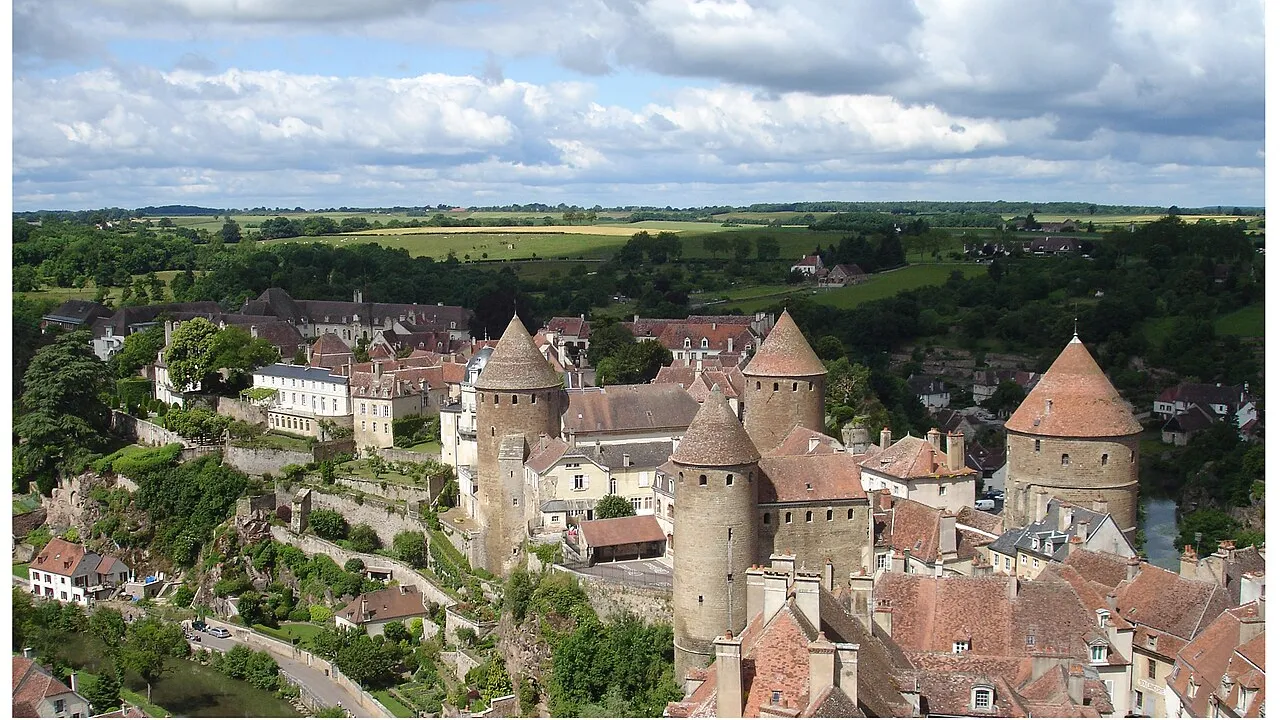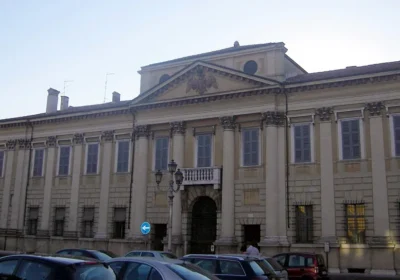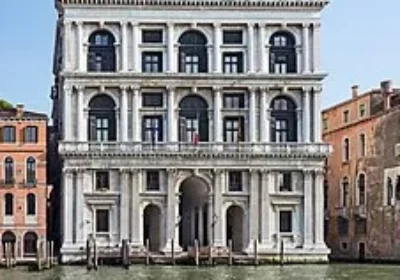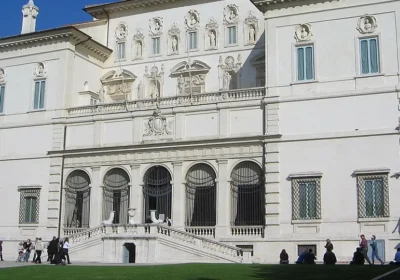One of the richest and most brilliant rivals of the French crown. In the 15th century Burgundy owned not only much of present-day France, but also much of present-day Holland, Belgium and Luxembourg.
It is probably the most brilliant court in 14th- and 15th-century Europe. In the 12th century, it was here that Gothicism was born. Burgundy’s landscapes are still considered some of the most beautiful in France today. Burgundy wines are also well known. Among the many famous “Burgundians” are the names of Victor Hugo and Gustave Eiffel, Louis Pasteur and the Lumière brothers – people whose ideas changed the way people live and think in the XIX-XX centuries.
Vezle. From the top of the high hill on which the temple stands, dizzying distances open up – this is the lungs of Burgundy, the reserve Morvan. Every bend in the road is a small work of nature. Villages, hills, fields, pastures, forests seem from here to have been painted with the brush of a great master…
The Basilica of St Mary Magdalene at the top of this hill in the centre of an active monastery is one of the most revered religious shrines in France. Here, in an 11th-century underground crypt, the relics of Mary Magdalene are still preserved. To this day, there is a steady stream of people travelling to worship at the shrine.
The temple is one of the finest monuments of the Romanesque style, which preceded the Gothic. Its striated arches, carved portals and capitals are considered masterpieces of French medieval art.
Here Bernard of Clairvaux, who had justified the necessity of the Crusades, proclaims the beginning of the second one on 31 March 1146. This is also where St Francis of Assisi founded the first Franciscan monastery in France. This is no coincidence: during the Middle Ages, this monastery was one of the four main pilgrimage stops on the way to the relics of St James of Compostela in faraway Spain…
Ludovic Saint and other French kings came here repeatedly.
The medieval town itself is unusually beautiful, with ancient streets, pretty restaurants, fortress walls, cellars with Burgundy wine…
Romain Rolland lived and died in one of the houses in Vezelay.
Osser. Hardly the most beautiful town in provincial Burgundy. Picturesque neighbourhoods of XV-XVI century houses, including a quarter of brothels and a quarter of sailors (once you could sail from here to Paris!)
The 13th century prefecture building and the powerful Gothic cathedral of St Etienne of the same period rise above the old streets. In its crypt you will find frescoes from the 11th and 13th centuries. Next to it is the equally majestic Abbey of St Germain, founded by St Germain, a native of Auxerre. He himself, the famous Saint, rests in one of the Abbey’s crypts in a 5th century sarcophagus, surrounded by later burials… In the same crypt you can see the oldest frescoes in France…
Osser is a unique town where the Middle Ages, the Renaissance, the 19th century and modernity are exquisitely combined. For more than 8 centuries, this tiered city has been reflected in the waters of the tranquil river Yona!
Modernity is expressed in the originality of the local sculpture, in the quality of the restaurants, in the beauty of the boutiques, and in many other little things… And football fans know the local football team well.
Saumur en Oxua. An incredibly beautiful medieval hilltop town with fortifications and towers dating from the 13th to 15th centuries. It was once an impregnable fortress. Many old houses, surrounded by small vineyards, serve as a picturesque frame for the impressive cathedral – a monument of architecture of XIII-XVI centuries. The whole town is one of the most spectacular in the whole of France. It takes your breath away and you don’t want to go anywhere else. Almost every house is a monument of architecture. The town is surrounded by medieval walls and washed by a picturesque river. All together it looks like an elaborate set for a film about medieval life, but it is a reality that surpasses any fantasy with its details…
The town has a curious museum of naive art, whose main “donor” is Jacques Yankel, a geology professor and artist, son of the Russian painter Mikhail Kikoin.
The roads of Burgundy. Burgundian landscapes, villages and towns are picturesque in the Burgundian way: medieval castles on hillsides, preserved fortress walls in small towns, stone houses in villages (often reminiscent of urbane houses), a large number of flowers, the multiplicity of views, white cows of the local Charolais breed…. The drive itself through this province is like travelling through a fairytale

















